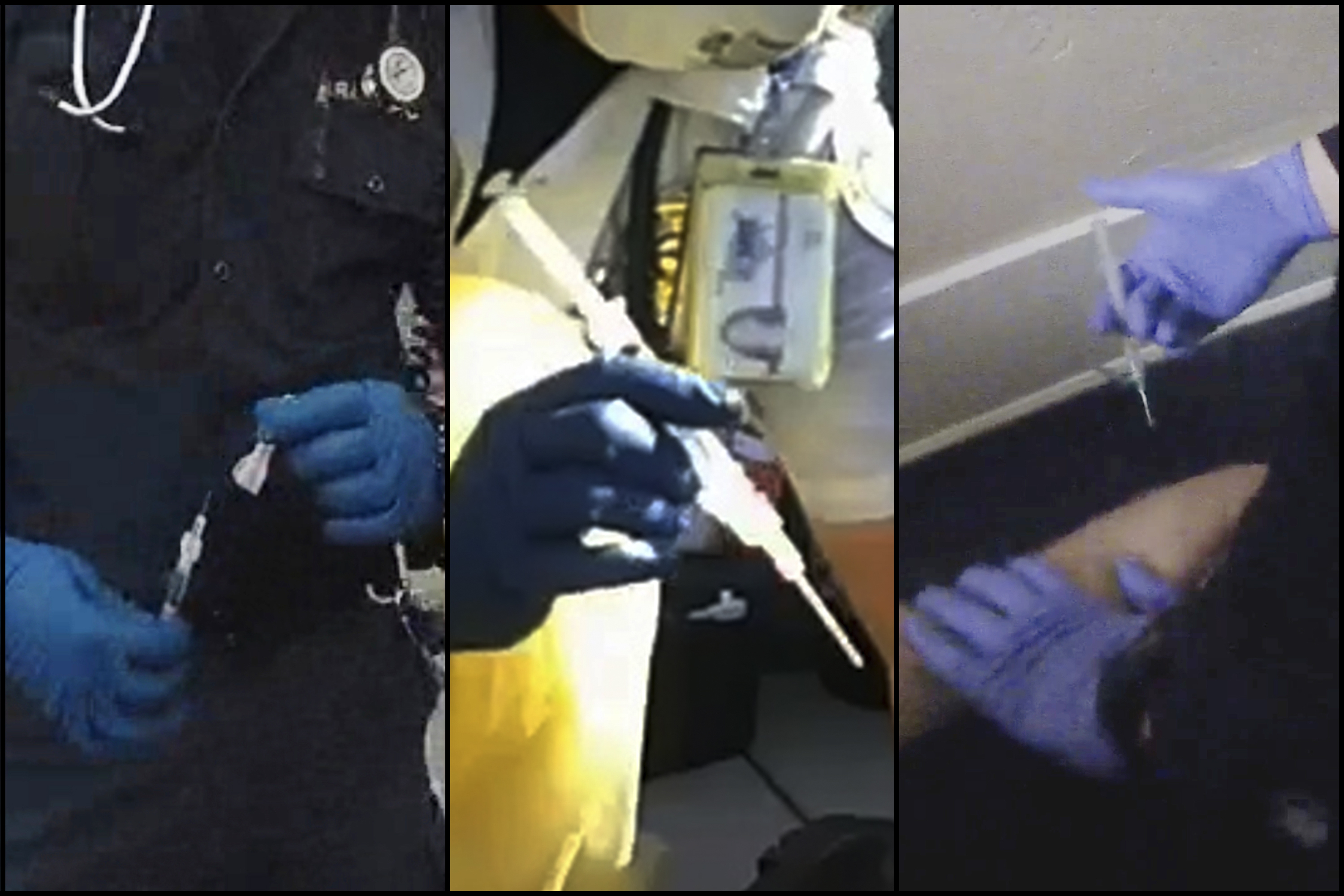In his sparsely furnished office in the Toms River, N.J. municipal building, James Mercready keeps a wall lined with giant color-coded maps that depict the enduring damage wrought by Hurricane Sandy: hundreds of homes that have been demolished, hundreds that still need to be, and hundreds more that remain uninhabitable.
Then there are the fires.
At first glance, their number, fewer than two dozen, doesn't seem significant. But these blazes worry Mercready, the township's fire official, because most of them occurred months after the storm passed, triggered in some cases by the unexpected aftereffects of the salt water that deluged this sprawling suburb on the Barnegat Bay on Oct. 29, 2012. In the most alarming examples, homes that had been rebuilt suffered electrical fires caused by hidden corrosion in a dishwasher and an air-conditioning condenser.
"The damage isn't done just when the water comes," Mercready said. "The corrosion continues. It doesn't stop."
What's happening in Toms River -— and across the Sandy-battered coast —- is the same kind of unseen, creeping decay blamed for the massive electrical fire that destroyed five blocks of the newly repaired boardwalk in Seaside Park and the shutdown of a subway tunnel beneath New York's East River. Engineers call this deterioration "latent damage," and, a year after the storm, it is only beginning to reveal itself, in ways small and grand.
As the region continues to rebuild, and develops methods to protect itself from future storms, officials are coming to grips with the fact that they also have to devote untold resources to deal with the effects of saltwater on massive infrastructure systems — roads, tunnels, bridges, the electrical grid, and telecommunications equipment. With little warning, a train signal system may fail, a power substation might erupt in flames, an airport runway light could short out, streets may start to crumble. The region’s major transportation agencies are in the process of assessing their vulnerabilities, a process that could cost billions.
"What we're finding is saltwater sitting in areas that you can't see and the damage is occurring every minute of the day," Fred Smith, chief engineer of New York's Metropolitan Transportation Authority, told a panel of experts in April. "So it's just a matter of time, and we can't identify all of that damage, but we know it's occurring, and it will show up in a week, a month, three months."
Not long after Smith's remarks, following months of balky service caused by corrosion-related power failures, the MTA announced that it was shutting down its Montague tube, which carries the busy R subway line between Manhattan and Brooklyn, for more than a year. The overhaul will cost an estimated $308 million. When it's done, a second tube will close for repairs.
U.S. & World
Stories that affect your life across the U.S. and around the world.
Similar problems are plaguing PATH, the subway that links Manhattan and New Jersey. The Port Authority of New York and New Jersey is spending $50 million on the first phase of a project to remove salt residue and replace cables and tracks.
"PATH employees made Herculean efforts to get the system up and running after the storm, but the residual salt left behind is a major obstacle to overcome in returning PATH to full health and reliability following Sandy's devastation," Port Authority Chairman David Samson said in a statement announcing the work.
And that's just the beginning.
More PATH repair work will be necessary, officials said. At the same time, the Port Authority is just starting to study the effects of latent damage in its airports, the Holland Tunnel and port facilities.
This problem does not necessarily come as a surprise. The science behind latent damage is the same that causes bridges and roads to crumble from the effects of winter de-icing. But Sandy took it to an unprecedented level. No one had ever dealt with saltwater completely swamping critical infrastructure as that storm did.
Now, as the region grapples with the possibility of more frequent storms and flooding, latent damage is becoming a more recognized concern.
“This inundation of salt water and the long term impacts after you wash everything down is really new stuff,” said Peter Zipf, the Port Authority’s chief engineer. “The textbook has not been written. I think we’re writing it right now.”
Government agencies have the benefit of inspectors and experts who can spend their days searching for signs of corrosion. But homeowners in Sandy’s flood zones don't enjoy such resources. Until Sandy, most probably never gave much thought to salt water getting into their appliances. After the storm, many figured that if the devices were dry and still working, they were okay to operate.
Not so.
"If you suffered any water damage and you have an electrical device, don't take a chance," said Mercready, the Toms River fire official. "Because you don't know what damage it suffered. The delayed, long-term effect sometimes takes a while to manifest."
Mercready, whose own home flooded during Sandy, said he didn't think of inspecting his air conditioning unit until spring, when he turned it on and it made a buzzing noise. He called a contractor, who urged him to replace it.
Another Toms River homeowner wasn't so fortunate. After rebuilding his house on the bay, he left his air conditioning on while he was away, and the outdoor condenser caught fire. The May blaze destroyed the house and damaged the one next door. Both homes remain unrepaired.
In another part of town, a couple's dishwasher caught fire, causing moderate damage to their recently restored home. No one was hurt.
Driving around Toms River on a recent afternoon, Mercready said he felt lucky that there hadn't been more fires. His office conducts an aggressive education campaign, but the potential risks were everywhere. Some oceanfront neighborhoods still looked like moonscapes. Streets were being torn up for new water and gas lines. Bayside communities were undergoing ambitious renovations.
"There's no playbook for this because we've never been through it," he said.
The local electrical utility, Jersey Central Power and Light, requires inspections before it restores service to a repaired home. But the effects of latent damage can be difficult to detect. That was evident in the Seaside Park fire, which was traced to corroded wires under the boardwalk and a nearby building. It remains unclear who owns the wires, and whether they were inspected. Local officials have said they didn't know the wires existed.
In the fire's aftermath, authorities urged businesses and homeowners to inspect and replace electrical systems in properties that flooded during the storm.
Experts have urged big government agencies to do the same.
"Err on the side of caution," said Michael Sweeney, a consultant at HNTB Corp., which is helping the MTA and NJ Transit deal with latent damage, and get the costs covered by federal recovery grants. "You can't assume that because water came to this level, everything above this level is fine. You have to say that any piece of equipment that got any level of water in it has got to go."
He added: "Everyone is trying to avoid surprises here. I'm not sure we're going to be perfect. But what no one wants is for something to happen and for people to say, 'That damn Sandy, it happened again.'"



